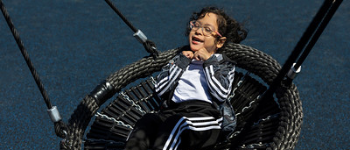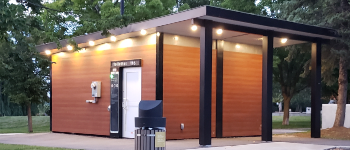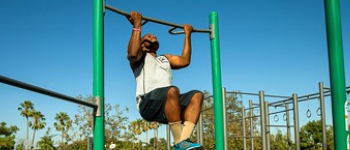How to Have a Fun & Safe Time at the Playground in the Summer
Jul 06







Oct 04
Playgrounds are a critical component of every community and school. While these areas are often thought of as just a way for kids to burn off energy while their parents or teachers take a break, the truth is that a properly designed playground does so much more. In a recent study of children with sensory processing disorders, it was found that kids who had access to inclusive play areas experienced benefits such as increased verbal and social interactions. Playground designers create a comprehensive environment where people from all walks of life with differing abilities can gather and socialize. These three examples of inclusive playground equipment add that extra special touch to any play area that encourages interaction.
For some children, a traditional zip line feature is just not safe or physically possible for them to enjoy. However, kids can still enjoy the thrill of feeling like they can fly with the installation of a zip track that includes seating that provides upper body support. Since the seat has a safety harness, children who lack the motor skills necessary to hold on can be safely secured into the seat where they can settle in for a fun trip across the tracks. At the other side, they can then be safely turned around for another zip down the track until their need for movement is satisfied.
The best inclusive playground equipment engages all of the senses, and sensory stations can be found that help kids enjoy sensations such as gentle pressure as they squeeze through swaying flexible panels. Sensory stations can also satisfy a child’s need for tactile input as they climb a wave slide or stop to play with a spinning panel. When selecting sensory stations, look for those that allow children to enter and exit at varying points along with features that enhance accessibility such as wheelchair access ramps.
People of all different abilities enjoy engaging with interactive instruments that enhance the playground environment with visual and auditory stimulation. Musical play areas may involve only one type of instrument, such as drums in a half circle that invite participants to experiment with the noise generated by each one. Alternatively, instrument ensemble sets allow park visitors to ring bells, speak into megaphones, roll a stick across a xylophone and bang on bongo drums in one convenient area. Since the instruments are set at just the right height, they are accessible to both young children and individuals with wheelchairs so that everyone can be a part of the newly formed band. For a truly inclusive musical addition, consider setting up individual chime sets or drums in varying areas around the play space to give children with sensory processing disorders a place to take a break if they get overwhelmed in the group play areas.
When you want to maximize your planning resources, inclusive playground equipment provides multiple ways for people to engage with each other while having fun at the park. Keep in mind that these three examples are just the starting point. From shadow play areas to sensory ramps, you have tons of options for creating a playground that everyone enjoys.